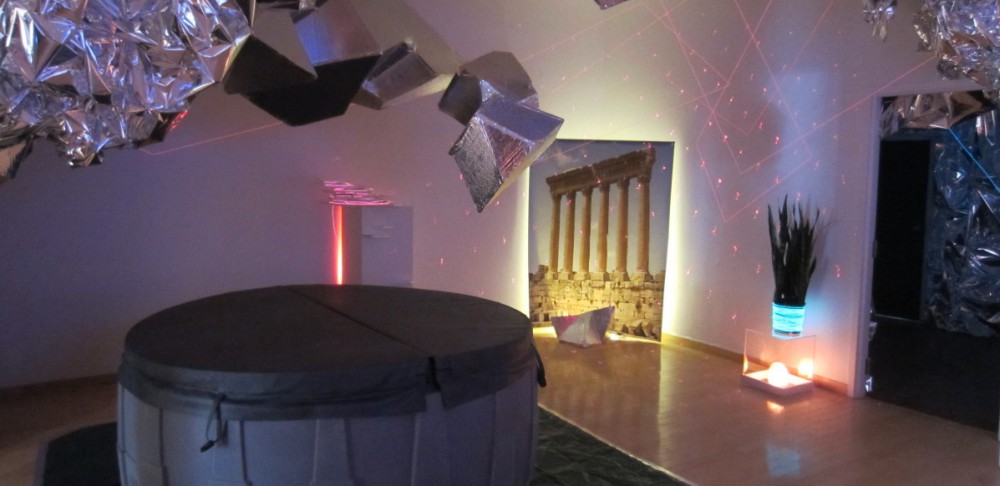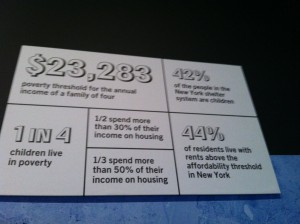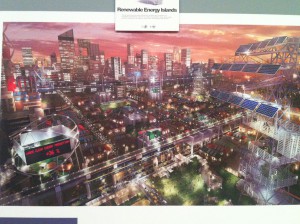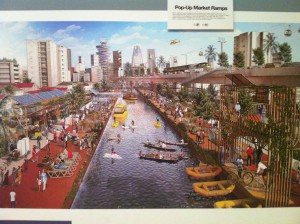Going to the Expanding Megacities exhibit at the Museum of Modern Art was a really eye opening experience for me. I’ve always been interested in how technology specialists and futurists project our cities to look like in the coming decades. Especially with our issues in climate change and over population, it is really important to start wondering how we are going to restructure our cities in terms of energy efficiency and growing poverty.
The first thing the exhibit tells you is that by the year 2030, the world population will have grown to almost 8 billion people (it is currently 6 billion). Two thirds of these people will be living in congested cities and most will be poor. This will lead to a dangerous rise in socioeconomic inequality among poor and rich people within urban areas. What this exhibit does is try to offer debates and discussions to help deal with this problem through cutting edge design, architecture, and energy efficiency.
One of the main things I took away from the exhibit was just how bad we manage homelessness in our own city here in New York. There was a video that played in which homelessness activists and housing activists spoke about the disproportionate inequality between poor and rich, especially when we look at housing. Profit-driven development has contributed to this problem, as the middle class families begin to fade away and poverty becomes ever more prevalent while luxury housing seems to be popping up more and more throughout the city. Some of these stats were really alarming and confirmed a very large issue that gets overlooked many times. One of the ways to fix this poverty problem in terms of low income housing and homelessness is to better allocate space within the city. There are too many wasted spaces scattered throughout the city that could be used to help with this problem. One crazy stat was that there was 3 times more vacant space than there are homeless people, which would easily solve this crisis. Also, there is a deficiency in affordable housing for low income families while there seems to be a surplus in rich housing, especially high rises which remain pretty vacant for long periods of time.
One of the cooler things I saw was an artistic rendering of what a future city would look like. This city of Lagos in the year 2050 would be free of fossil fuel dependency and off grid. Clean energy, wind turbines, and solar panels are all over, along with high speed rails and health centers. When connecting it to the material in class, the cities resembles that of the futuristic cities you might see in Metropolis, but I think they try to focus less on technology and more on having a healthy human life in a city that may be over-populated in the near future. Also, this issue congested cities and over-population made me think about the cells in The Machine Stops. Everybody confined to small apartments and housing (especially housing projects which I used to live in)
It was a great view into the future. I hope our politicians can come around to these ideas and put them into fruition. I was a little disappointed we didn’t get to see some future projections of what New York might possibly look like (most of it was based in homelessness and lack of affordable housing). I would’ve liked to see some artist renderings for New York that I saw with the other cities.






